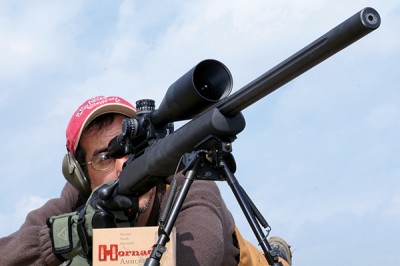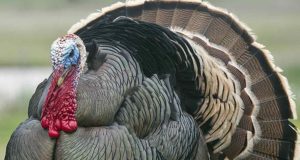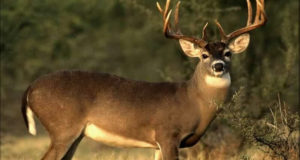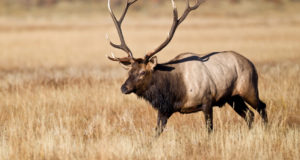
Image source: shotgunnews.com
If you’ve never tried long-range shooting in general, you’re missing out. Although shooting out past 500 yards, and thence onto 800, 900 and 1,000-plus yards takes lots of skill, it provides an unparalleled shooting experience.
Additionally, this form of shooting will require some specialized and expensive equipment, and is best tackled when a person has first mastered the fundamentals of marksmanship at shorter ranges. Still, extended long-range shooting can sometimes grow a little old, as there is only so much fun to be had in shooting paper or even steel at those ranges. What if there was an activity that would take all of what you learned, while at the same time honing your long-range shooting skills, and coupled that with the thrill of unpredictable moving targets? Such a sport exists, and it’s called long-range varmint hunting – and it’s growing in popularity quite rapidly.
WHAT IS A VARMINT, ANYWAYS?
First, we need to define what it is that we’re hunting in the first place – the varmint. Essentially, varmints are pest mammals that have no culinary purpose and more or less represent a nuisance to crops or livestock. Some examples of popular varmints for hunting are:
- Badgers
- Groundhogs
- Prairie Dogs
- Marmots
- Coyotes
- Ground Squirrels
Animals such as these are common in all parts of the United States, and usually, they fall outside of designated hunting seasons and can be harvested year round – another reason why varmint hunting is so popular.
WHAT SORT OF EQUIPMENT IS REQUIRED?
Long-range varmint hunting puts a premium on flat shooting calibers with very high ballistic coefficients that are pushed to extremely high velocities. It doesn’t take much to kill something like a ground squirrel – a pellet gun could easily do it, but it absolutely takes a special rifle to kill that ground squirrel 500 yards away. The targets are so small that there is really very little room for error, and therefore a massive premium is placed on accuracy.
Before getting into the pros and cons of various calibers, realize that the best long range-varmint rifle will undoubtedly be a bolt action gun. There are several reasons for this, but primarily, bolt action rifles with barrels of 20 inches and over are best suited for varmint hunting. Optics should be of the highest quality, since mirage and other aberrations are apparent at long ranges – we recommend an 8-10x fixed power scope for all but the longest ranges.
Caliber wise, there are plenty of stalwart choices for long-range varmint shooting that can punch out to several hundred yards and still have the energy to knock something even the size of a coyote out of commission. Some favorites are:
- .22-250 Remington: An ultra-high velocity round that is capable of speeds of up to 4,000 feet per second, the .22-250 is particularly popular in high-wind areas like prairies, where it is used with abandon to hunt gophers and the like.
- .220 Swift: Formerly the fastest commercial cartridge in the world, the .220 Swift is also capable of velocities over 4,000 feet per second. On the downside, it does tend to wear out barrels fast, but it is a remarkable flat and effective cartridge.
- .223 Winchester Super Short Magnum (WSSM): The .223 WSSM looks like a caricature; it has a big, fat case capped with a tiny pointed bullet, but its performance is anything but cartoonish. Blazing away at over 4,600 feet per second, the .223 WSSM is an ultra-high velocity round that is an amazing varmint cartridge.
If you felt there was a pattern emerging, one that resembles .22 caliber variant cartridges pushed to ridiculous velocities, then you’ve nailed the principles behind long range varmint shooting. In essence, if the round can get there fast, not spend much time in flight, and shoot flat, you have a recipe for effectively taking varmints out to extreme ranges.
ZEROING AND PRACTICE SHOOTING
Zero your rifle out to the range you’ll be hitting. Unlike a conventional long-range rifle that’s usually zeroed out to 100 yards and then subsequently adjusted out for various ranges, zero your long-range varmint rifle a little further out – 300 and even 400 yards if you can do it. You’ll most likely be shooting varmints at these sorts of ranges anyways, and this will help you make fewer adjustments the further you shoot. Practice at first can be at the range, and subsequently can be anywhere the varmints happen to be, and that’s the beauty of long-range varmint hunting: the targets are plentiful, there is little to no cleanup, and the species you are shooting are a nuisance rather than endangered.
Long-range varmint hunting is extremely addictive, and we recommend adding cartridge reloading to the mix, as some of the pseudo wildcat cartridges we recommended can get pricy if you don’t reload. Honing your shooting skills has truly never been easier than by long-range varmint hunting.
 Off The Grid News Better Ideas For Off The Grid Living
Off The Grid News Better Ideas For Off The Grid Living




